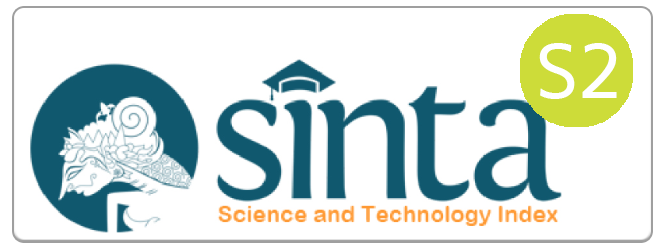Perilaku Overconfidence Di Bursa Efek Indonesia (BEI) (Studi kasus pada Index LQ45 periode 2014-2016)
Abstract
Abstrak
Penelitian ini bertujuan untuk mengidentifikasi perilaku overconfidence investor di Bursa Efek Indonesia dari tahun 2014 hingga 2016. Overconfidence adalah bias psikologis yang dapat menyebabkan investor melakukan perdagangan yang berlebihan sebagai efek dari keyakinan bahwa mereka memiliki pengetahuan khusus yang sebenarnya tidak mereka miliki dan membuat investor overstimate (overestimating) kemampuannya untuk mengevaluasi investasi. Pendekatan untuk melihat perilaku overconfidence adalah dengan melihat pola hubungan antara return saham, volatilitas saham, dan volume transaksi.
Dalam penelitian ini digunakan Vector Autoregression (VAR). Data yang digunakan dalam penelitian ini adalah return saham, volatilitas saham dan volume transaksi bulanan. Sampel yang digunakan adalah perusahaan yang secara konsisten memasukkan Indeks LQ45 periode 2014 hingga 2016. Analisis VAR menggunakan beberapa metode untuk menjawab masalah penelitian yaitu estimasi model VAR dan Impulse Response Function. Dari hasil pengujian menggunakan analisis VAR, menunjukkan bahwa investor Indonesia mengalami overconfidence. Hasil estimasi Vector Autoregression menunjukkan bahwa hubungan antara return dan volume perdagangan tidak signifikan, tetapi memberikan kontribusi positif berdasarkan nilai koefisien. Sementara hubungan antara volatilitas dengan volume perdagangan menunjukkan hasil positif yang signifikan.
Kata kunci: Overconfidence, Return Saham, Volume Perdagangan, Volatilitas, Vector Autoregression (VAR), Fungsi Respon Impuls
Abstract
This study purposed to identify overconfidence behavior investor in Indonesia Stock Exchange from 2014 until 2016. Overconfidence is a psychological bias that can cause investors to excessive trading as the effect of the belief that they have specific knowledge they do not actually have and making the overstimate investor (overestimating) his ability to evaluate an investment. Approach to see the behavior of overconfidence is to see the pattern of relationship between stock returns, stock volatility and transaction volume. In this study using the Vector Autoregression (VAR). The data used in this study are the stock return, volatility of the stock and the volume of monthly transactions. The samples used are companies that consistently enter Index LQ45 period 2014 until 2016. VAR analysis uses several methods to answer the research problem that is estimation of VAR model and Impulse Response Function. From the test results using VAR analysis, show that Indonesian investors experience overconfidence. The result of Vector Autoregression estimation shows that the relationship between return and trade volume is not significant, but gives positive contribution based on coefficient value. While the relationship between volatility with trade volume showed a significant positive result.Keywords: Overconfidence, Stock Return, Trading Volume, Volatility, Vector Autoregression (VAR), Impulse response functionFull Text:
PDFDOI: http://dx.doi.org/10.24856/mem.v33i2.713
Article Metrics
Abstract view : 1872 timesPDF - 0 times
Refbacks
- There are currently no refbacks.
Copyright (c) 2018 Media Ekonomi dan Manajemen

This work is licensed under a Creative Commons Attribution 4.0 International License.







